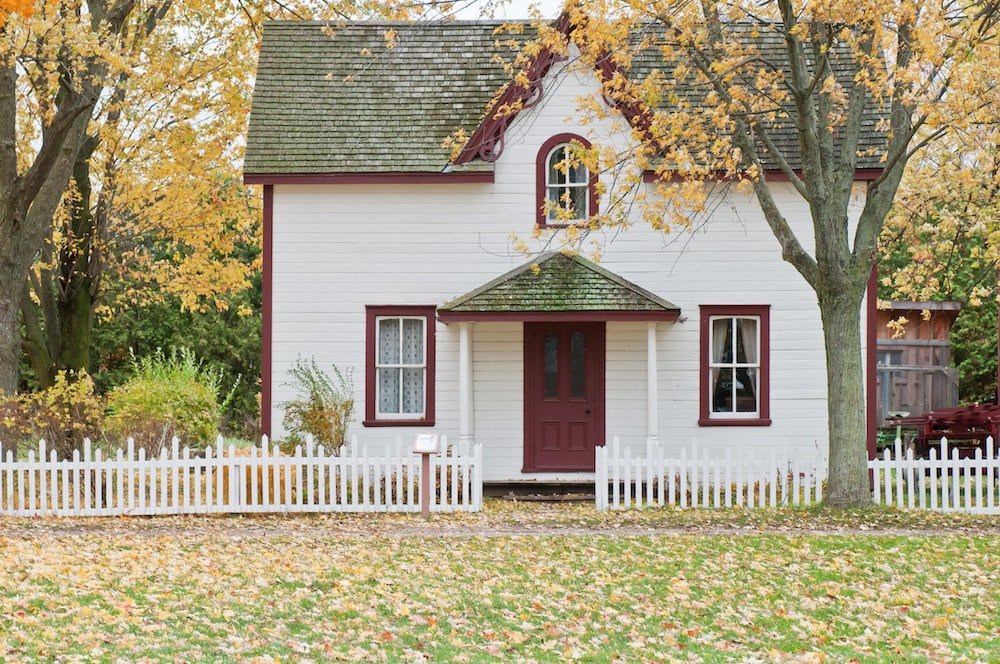
If one of your goals for 2022 is buying a home, you’re in the right place. Mortgage rates continue to rise as the Fed attempts to slow down inflation, but the housing market is also growing less competitive which is great news for new homebuyers. As a result, one of the biggest questions we hear from homebuyers is whether or not to apply for a fixed-rate mortgage or an adjustable-rate mortgage.
This article can help you decide which mortgage better fits your financial goals.
One of the best actions you can take is to connect with a local mortgage advisor. A local advisor can guide you through your best options and even put together a custom home loan. Homeownership is one of the fastest paths to building financial stability.
RELATED: Uncover the Real Value of a Local Mortgage Advisor
Fixed-rate mortgages are the most popular type of home loan (when rates are low).
Fixed-rate home loans are typically offered for a 30-year term or 15-year term. While fixed-rate home loans offer slightly higher mortgage rates than adjustable-rate mortgages, fixed-rate loans have stable terms for the life of the loan.
The upshot is your mortgage payment stays the same for the entire 30 years (or 15), and your rate stays the same.
A fixed-rate mortgage keeps monthly mortgage payments reliable, predictable, and easy on your budget. So no matter how the mortgage market changes, you can rest secure and know that your mortgage payment won’t change.
But is it smart to lock in a 30-year loan when mortgage rates are high? All things considered, rates are still relatively low compared to past decades that were driven by inflation.
Adjustable-Rate Mortgages
Adjustable-rate mortgages often offer the lowest mortgage rates available.
ARM interest rates are set for an initial loan period (called an adjustment period), and then they shift according to the market. This is why the loan is called “adjustable.” Essentially, the mortgage rate adjusts along with market trends, after the initial period ends.
Adjustable-rate mortgages typically offer an initial adjustment period for 5 to 7 years, during which the mortgage rate does not change. When applying for a mortgage with an adjustable-rate mortgage, the first loan period (called an adjustment period) will be a lower interest rate and a lower mortgage payment compared to a fixed-rate mortgage.
This is ideal if you plan to stay in the home for less than the initial adjustment period for the loan. For example, if you expect to move for work within 5-7 years, or plan to sell the home for other reasons, an ARM could save you money in the short term.
Use this mortgage calculator to find out how much you can afford right now
An adjustable-rate mortgage is also ideal for buyers who want to purchase a home while mortgage rates are higher than usual. ARM loans can help homebuyers get into the housing market at a lower rate.
However, adjustable-rate mortgages often include complex changes after the initial adjustment period. For this reason, it’s important to discuss the full terms of your loan with a trusted mortgage advisor.
Related: When to Stop Renting and Become a Homeowner
Benefits of an Adjustable-Rate Mortgage
- ARM’s provide new homeowners with a lower mortgage payment and a lower mortgage rate. Compared to a fixed-rate mortgage, ARM’s often translate to lower rates and a smaller mortgage payment, which can help new homeowners save money.
- You could become a homeowner sooner with an ARM. Lower interest rates translate to a lower initial mortgage payment and a lower DTI (debt-to-income) ratio. As a result, you could qualify for a new home loan sooner than you think.
- ARM’s offer homeowners more buying power. Since ARM’s offer a lower interest rate, you could qualify for a higher purchase price and a bigger home.
- When the market shifts downward, your mortgage rate decreases (after the adjustment period). This means you could have a lower mortgage payment or the option to refinance at a lower interest rate.
- Invest your extra cash elsewhere during low-interest periods of your ARM home loan, and build your wealth.
Drawbacks of an Adjustable-Rate Mortgage
- The market is ultimately unpredictable, and you may end up with an unexpectedly high monthly mortgage payment. This is one of the main reasons it’s wise to connect with a mortgage advisor. A qualified advisor in your area can explain the process and recommend the best options customized for you.
- Initial loan caps might make the first readjustment period costly. Ask your mortgage advisor how to plan ahead.
- Mortgage lenders have more options when it comes to ARM home loans. As a result, some lenders introduce a number of complicated factors like high fees and caps, and various restrictions. This could put you in a mortgage contract that might work against your financial goals.
Related: Check out the best custom loan options for 2022
How to Decide Between a Fixed-Rate Mortgage vs. Adjustable-Rate Mortgage
1. Think about how long you expect to live in the home.
An adjustable-rate mortgage is ideal for homeowners looking to stay put for 5 to 7 years, which is the typical adjustment period for ARM home loans. The “initial adjustment period” is the length of time that your mortgage rate will stay the same. After this period is over, your rate will change with the market, which could increase or decrease your mortgage payment.
If you expect to live in your new home for a longer period of time, a fixed-rate mortgage can bring stability. You won’t need to worry about mortgage rates or your mortgage payment changing with a fixed-rate mortgage.
You’ll always have the option to refinance, no matter which home loan you have initially.
Just be aware that you’ll be subject to current mortgage rates, closing costs, and one-time fees to secure your new home loan when you refinance. In addition, many ARMs have restrictions that result in pre-payment penalties and unexpected balloon payments.
Be sure to connect with a trusted mortgage advisor who can guide you through your best options.
2. Understand the ARM adjustment period for your home loan.
Most ARM home loans offer adjustment periods of 3 to 10 years (5-7 is the most common). Shorter adjustment periods offer lower rates, securing a low mortgage payment. However, your mortgage rate will fluctuate with the market once the adjustment period ends. Talk to your mortgage advisor about the detailed terms of your home loan including caps, added fees, and potential balloon payments.
A fixed-rate mortgage sets your mortgage payment (and your interest) for the entire loan term. The rate and payment will remain unchanged for the life of your loan. The longer the term, the lower your mortgage payment will be. For example, a 30-year fixed-rate mortgage will have a lower mortgage payment since you have 30 years to pay off the loan. A 15-year fixed-rate loan will have a higher payment, but you’ll pay much less in interest over the life of the loan.
3. Evaluate current mortgage rates and market trends.
With current trends, inflation, and recent action taken by the Fed, it might be a smart move to apply for an adjustable-rate loan. While mortgage rates are increasing, it’s possible to lock in a rate for a typical ARM adjustment period (5-7 years).
Market experts expect mortgage rates to continue to rise until the economy stabilizes, though it’s unknown when this could take effect and for how long.
When the market fluctuates, adjustable-rate mortgages change along with it once the adjustment period ends.
RELATED: How to FAST TRACK your application with a mortgage pre-approval
Summary
Applying for an adjustable-rate mortgage can help you get a lower mortgage rate and a lower mortgage payment. For first-time homebuyers, an adjustable-rate mortgage provides flexibility, especially if you think you might move or sell your home within 5 to 7 years.
A fixed-rate mortgage promises a mortgage rate that won’t change and steady mortgage payments for the life of the home loan. If you’re refinancing your mortgage, a fixed-rate mortgage can bring stability for years to come.
Connecting with a mortgage advisor is the best move you can make to get your best mortgage and meet your homeownership goals.
Next Steps
When you’re ready to buy a home, applying for an adjustable-rate mortgage could help you become a homeowner sooner than you think. In addition, an ARM could provide a lower mortgage payment or help you afford a bigger home. Whether you’re a new homeowner or refinancing your third home, take time to connect with a local mortgage advisor and start building financial stability through homeownership. We’d love to help.



